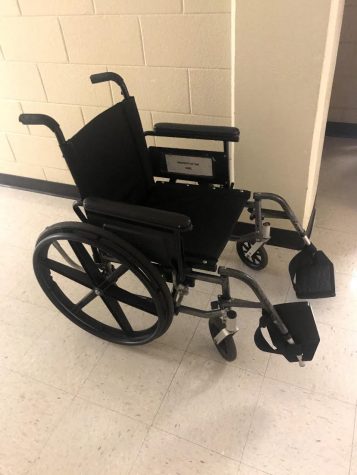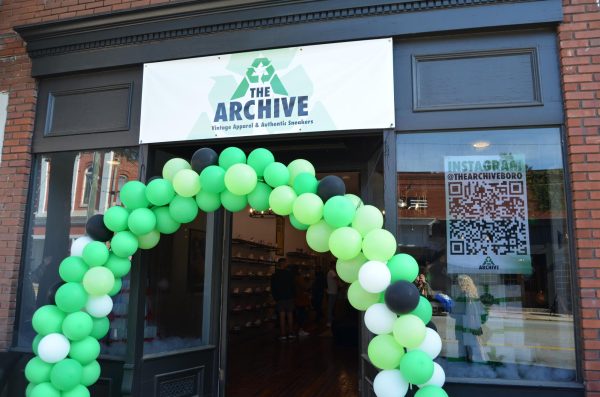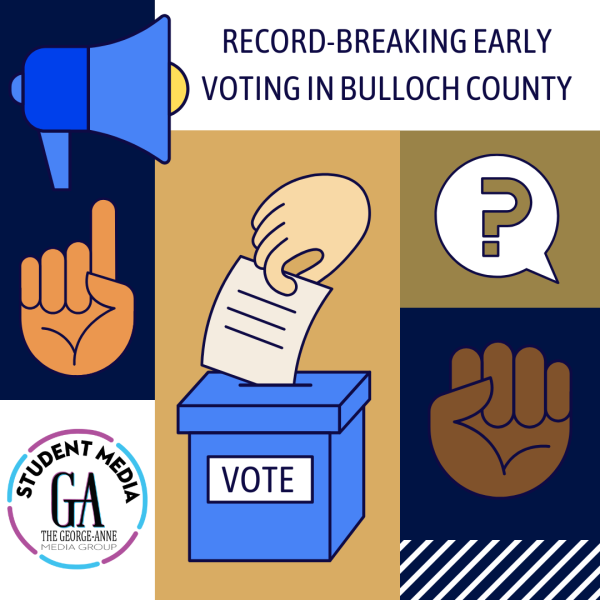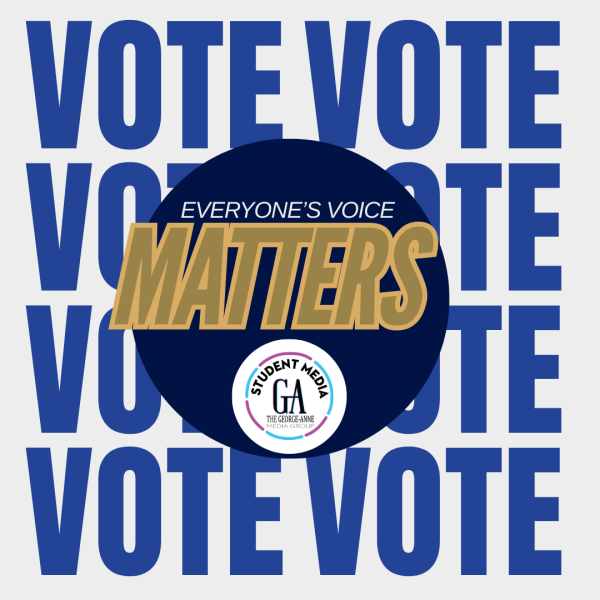OPINION | 1 wheelchair for 20,000+ students
There are a lot of things I didn’t take the time to think about before becoming disabled. I never thought about whether elevators were past their inspection date, and I certainly never thought about accessibility nearly as much as I do now.
On August 9th, the George-Anne Media Group was having its first day of organization-wide training.
Not long before the training, I had started using a cane to help with the mobility issues and chronic pain that came with my disability. I had spent my summer in local doctor’s offices, trying to make returning to campus as easy on my body as possible, but halfway through the day on August 9th, I had overexerted myself.
I knew it was likely to happen, but I wasn’t sure when. But I could feel my heart racing just as well as I could feel how my legs wanted to give out from underneath me. I sat down and waited for it to pass, waiting to regain feeling in my knees but there wasn’t much to be done. I had no way of checking my heart rate at that time, and at that point, my cane was not enough.
Fellow Deep Dive correspondent, Mateo Molinari, was trying his best to help. He called the Student Accessibility Resource Center (SARC) twice on his cell phone before getting the information desk in the Russell Union to call them as well. SARC didn’t answer any of these phone calls.

Mateo was able to get a hold of SARC later on in the day. He presented my situation to the office, explaining that I was having trouble with mobility and needed more than the cane I had access to currently. He was asked if I had a wheelchair of my own and was then asked if I really needed the help since they only had one wheelchair. I don’t own a wheelchair, and I was near passing out earlier that day from pain and overexertion. Mateo said I did need it and SARC said he could pick it up from the office the next morning and would be liable for any damages.
When Mateo picked up SARC’s wheelchair on the morning of August 10th, it was clear that the wheelchair wasn’t in its best condition. The left foot rest could be removed with little manipulation and wasn’t reliable to use. The wheelchair also had a clear creak.
I also noticed all of this when it was brought to me. When I sat in it, the creak was clearer. Putting my bookbag on the back made the wheelchair even more difficult to use. Overall, if I had more severe mobility issues or weighed more than I do, this wheelchair could have been incredibly dangerous for me. It is my belief that it could be dangerous to other students.
I tried to reach out to SARC to discuss this issue on a few occasions and didn’t receive a reply.
The fact that this is Statesboro SARC’s only wheelchair and that it isn’t in good condition makes me worry about other disabled students who may need a wheelchair in the future. It is my hope that open discussion about what disabled students need can help our university improve on the front of accessibility.
Seeing as my disability has worsened over time and will continue to worsen over time, I can only hope this improvement can be done before it is too late. Before my body is at the point that SARC’s wheelchair would cause me harm, and before the lack of accessibility further impacts my education. It affects far too many students now. The average student may not think of these things now, but neither did I before I got sick.









Brittany Jelinski • Sep 9, 2021 at 1:40 pm
In my previous comment I said something about being in a similar situation as Mateo but I was mistaken about who was speaking in this article — I should have said Jillian, I believe.
Brittany Jelinski • Sep 9, 2021 at 1:09 pm
This piece means a lot to me. I am in a similar boat as Mateo. I had to start using a cane earlier this year. On my first day of class this semester, the elevator wasn’t working and I had to wait for a technician to come get it working. I missed half of my class period. All my classes are in Foy and on the third floor (sometimes fourth) but the elevator is so unreliable. I have missed classes in past semesters because of this elevator being out of service.
Furthermore, the walk from my car in a disabled parking spot to the Foy building is sometimes too much for me. The kind people running the Foy office have picked me up and given me rides in a golf cart on the days that I can’t do the walk (my cane is not enough) (thank you so much, Ms. Gast!). SARC should provide a shuttle service for these kinds of situations. I can’t afford to buy my own wheelchair, and it is only occasionally that I would really need to use a wheelchair, so a shuttle service is much more reasonable than having to somehow acquire a wheelchair and lug it around with me just on the off chance that I’m going to need it.
I was encouraged to contact SARC and ask if there are any other accommodations or aids to help me get to my classes, and so I did reach out, but they don’t offer any more help other than excusing tardiness (and sometimes absences). So if I can’t get to class because of my illness and physical disability, if that professor doesn’t have something in place to record their class sessions or something along those lines, I am just out of luck.
I hope this can get more attention. Accessibility is a huge, perpetual challenge for those of us with chronic illnesses and disabilities, in all areas of life. It shouldn’t also be a battle for us at Georgia Southern, the place that we should be able to call Home.
Amee Adkins • Aug 30, 2021 at 10:12 am
Thank you for this piece. I hope you continue to investigate and report on campus accessibility. We must do better.